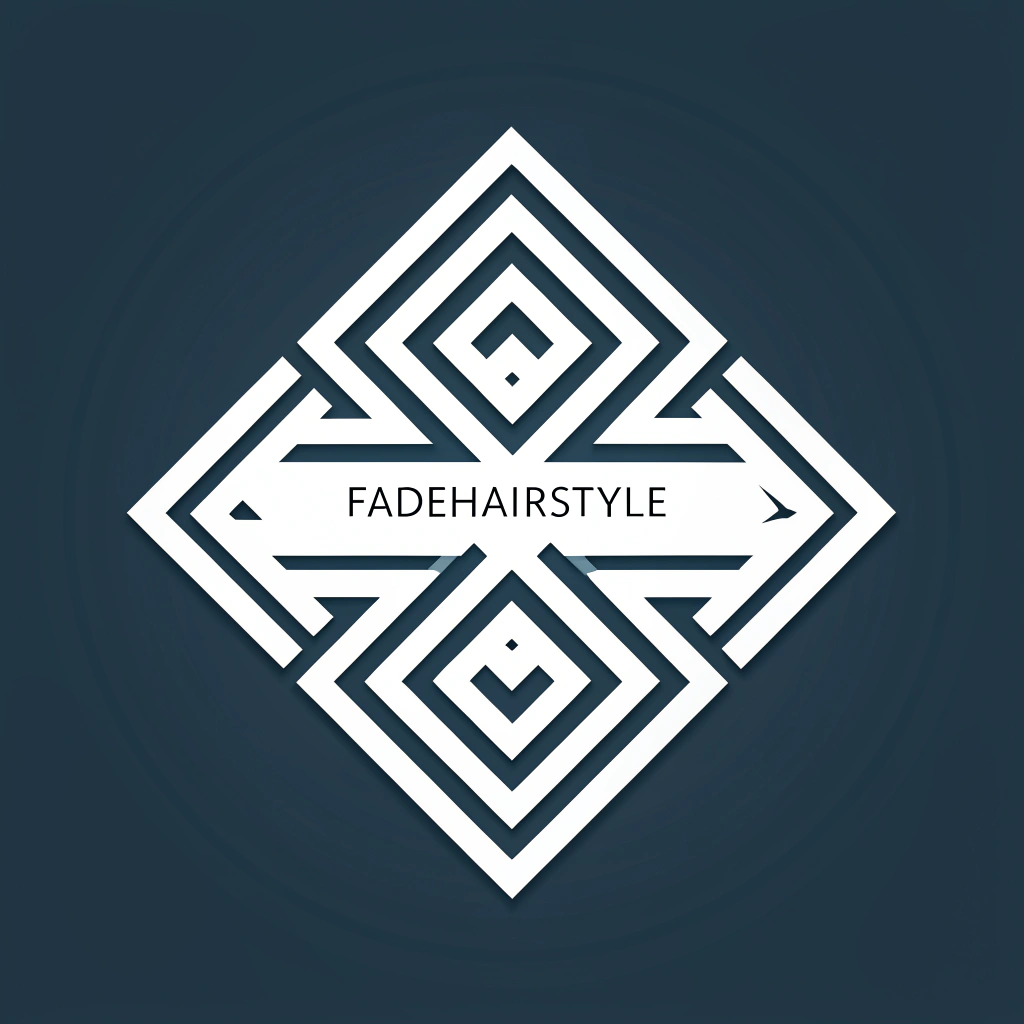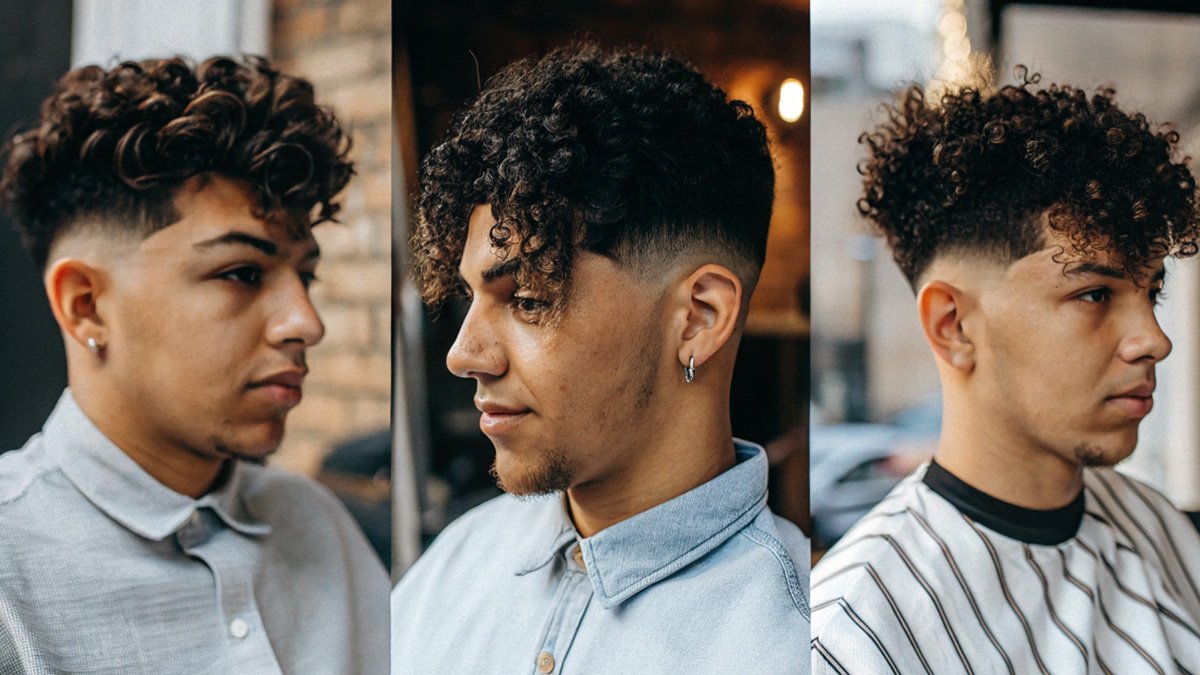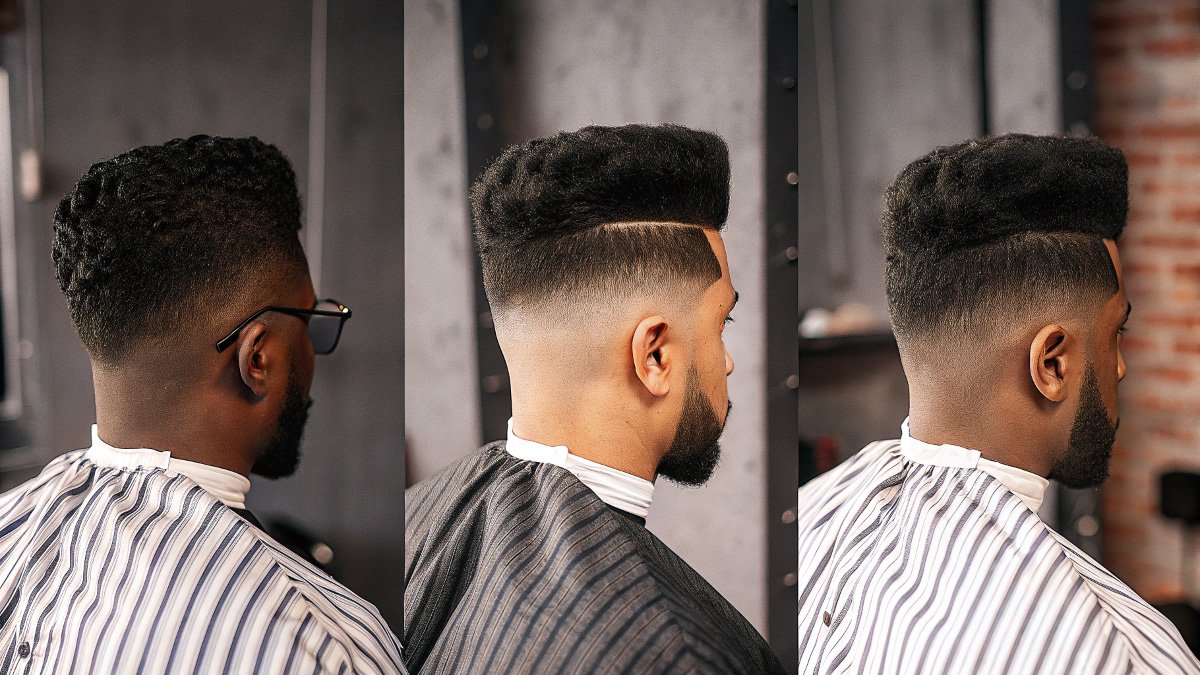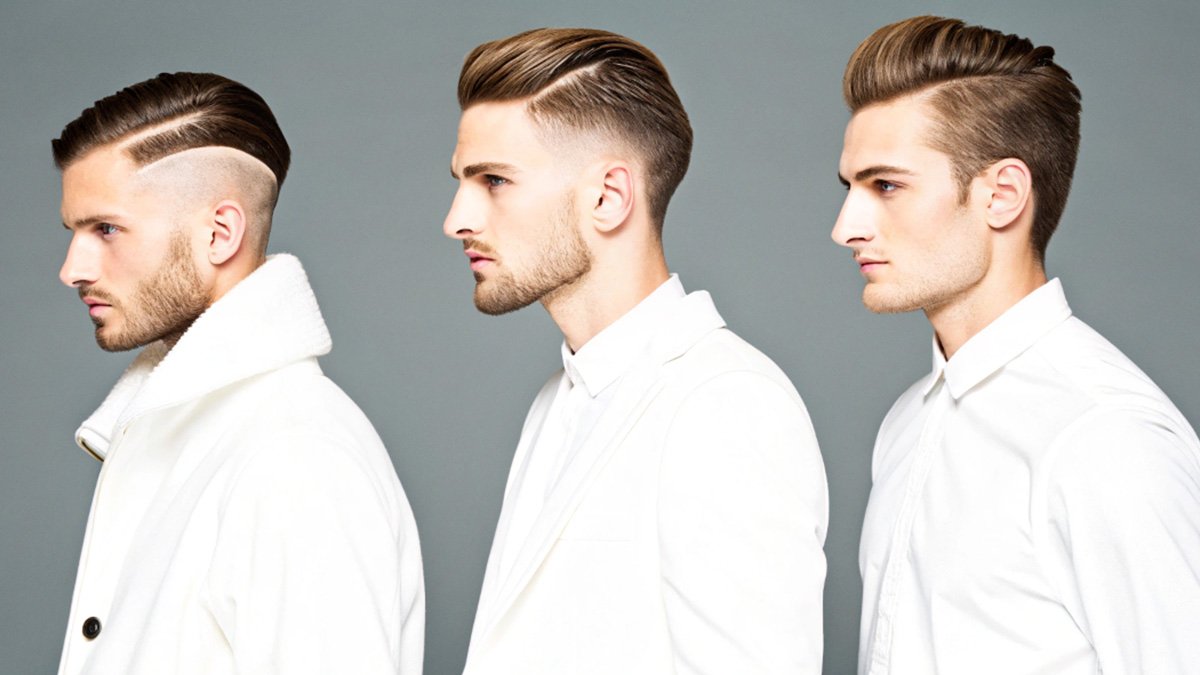Men with curly hair face unique challenges. Traditional haircuts often fail to work with natural texture. Fades solve this problem by creating structure while celebrating curls. This cut removes bulk from sides and back. Length remains on top to showcase natural patterns. The result transforms unruly hair into a sharp, professional style.
Barbers who understand curly hair create better results. They know how curls behave after cutting. This knowledge prevents common problems like uneven growth and poor transitions. The right fade enhances your natural texture instead of fighting it.
Different Fade Heights and Their Effects
Each fade height creates a different look. Low fades offer subtle changes. High fades make bold statements. Mid-range options balance both approaches. Your choice depends on personal style and professional requirements.
Low Fade Techniques
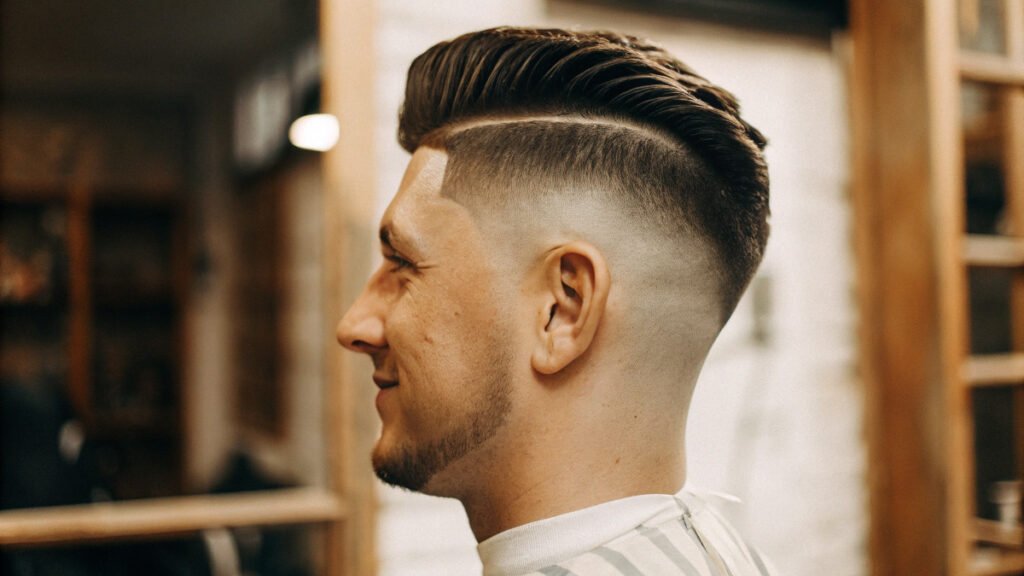
Low fades begin just above the ear. Hair stays longer on the sides. This style works in conservative environments. The gentle transition maintains volume while adding structure.
Barbers start the fade at ear level. Clippers remove hair gradually from bottom to top. The longest sections blend into natural curls. This creates a clean outline without dramatic contrast.
Low fades suit men with dense hair. The extra length prevents the scalp from showing through. Professional settings accept this conservative approach. Maintenance needs are minimal compared to higher fades.
Mid Fade Applications
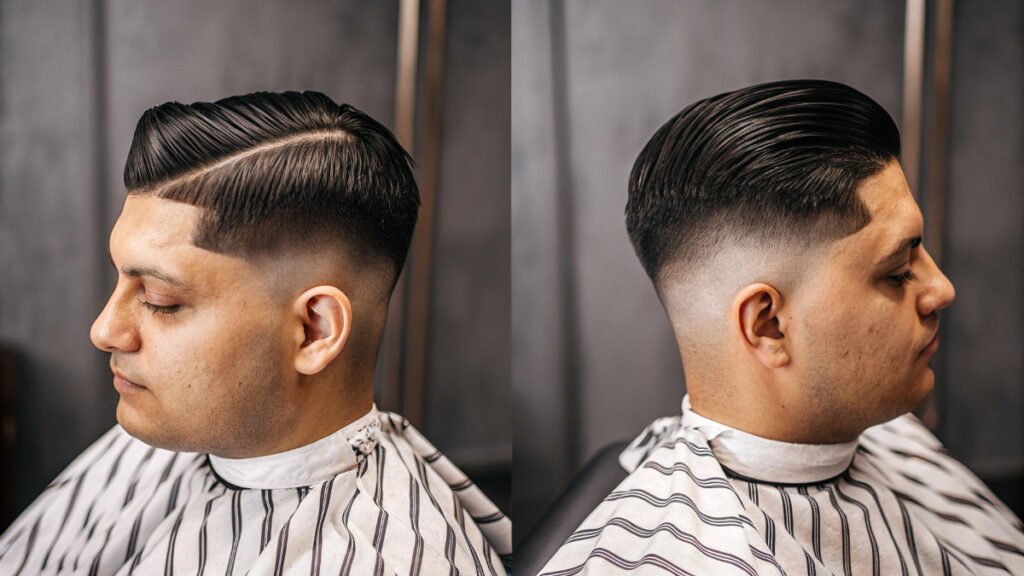
Mid fades start at temple height. They show more contrast than low versions. Sides appear cleaner and more defined. This style works for both casual and business settings.
The cutting process requires precision. Barbers create a sharp transition point at the temples. Hair below this line stays very short. Hair above blends into the curls on top.
Mid fades highlight facial features. The clean sides draw attention to eyes and bone structure. Men with strong jawlines benefit from this emphasis. Regular touch-ups keep the style looking fresh.
High Fade Benefits
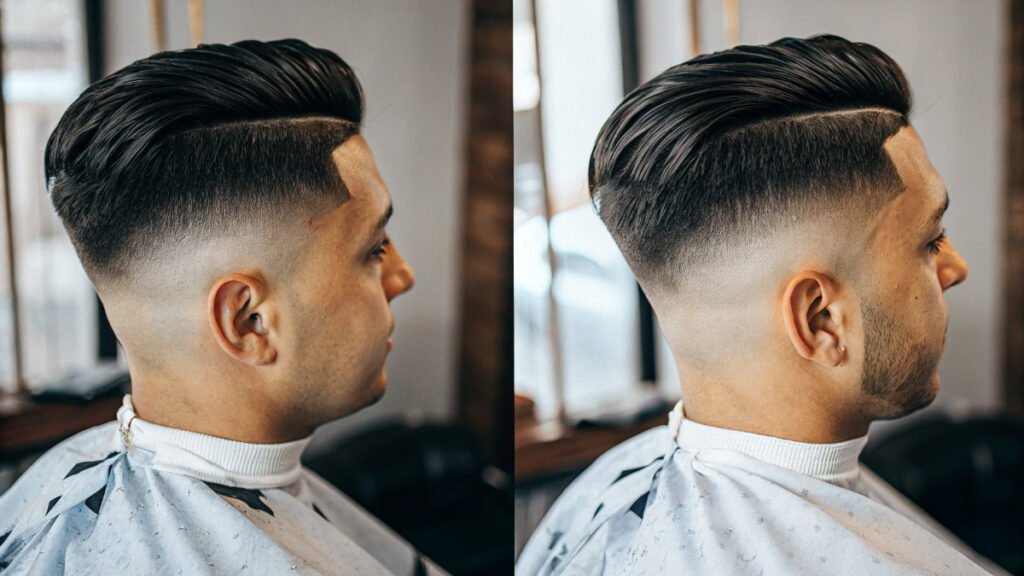
High fades begin near the crown area. They create maximum contrast between sides and top. Curls on top become the main focus. This style makes a strong visual statement.
Barbers remove most hair from the sides and back. Only the top section keeps significant length. The dramatic difference requires careful blending. Skilled professionals create smooth transitions.
High fades need frequent maintenance. Hair grows quickly at the bottom. The clean lines disappear within two weeks. Men who choose this style must commit to regular appointments.
Specialized Fade Variations
Several fade types offer unique benefits. Each variation serves different style goals. Understanding these options helps you choose the right cut.
Temple Fade Characteristics
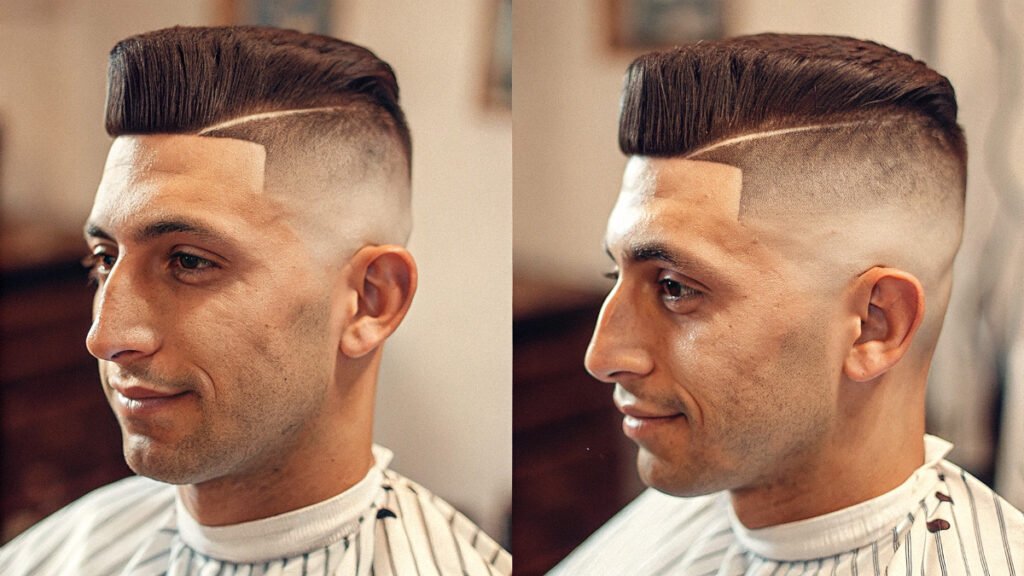
Temple fades focus on the sides of your head. Clean lines form around the temple area. This style follows natural hairlines. Both short and long curls work with this approach.
Barbers cut precise lines at temple points. The fade moves upward into natural curls. Sharp edges need regular maintenance. This style suits men who want defined boundaries.
Temple fades work with professional dress codes. The clean appearance looks polished and intentional. Men in client-facing roles benefit from this refined look.
Skin Fade Properties
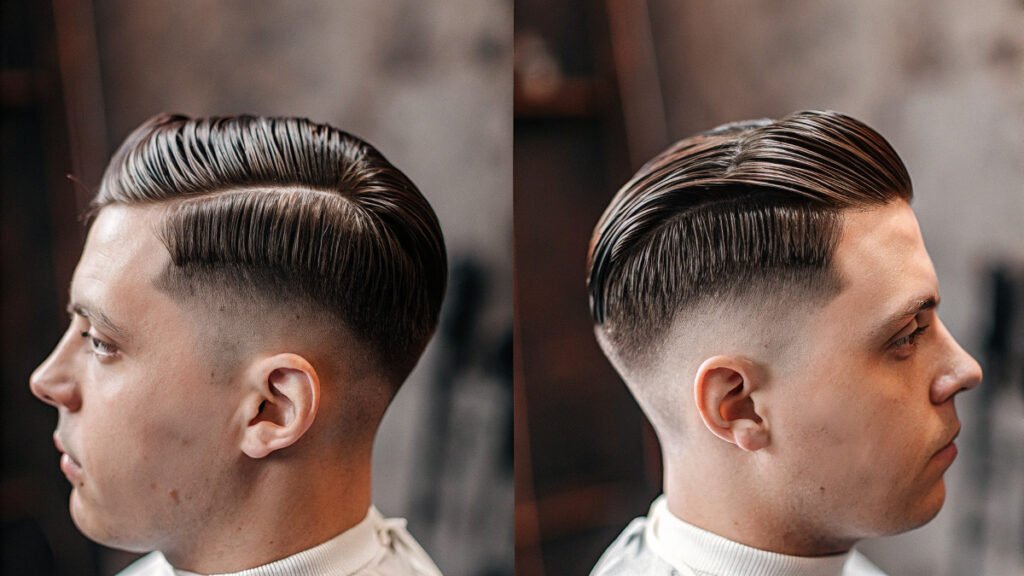
Skin fades show bare scalp at the bottom. Maximum contrast appears between sides and top. All curl types work with this dramatic approach. Regular upkeep maintains the sharp appearance.
Barbers use razors for the closest possible cut. Hair transitions from skin to natural length. Bold contrasts showcase curl patterns on top. This style demands attention and confidence.
Skin fades require appointments every two weeks. The clean skin area shows growth quickly. Men must budget time and money for maintenance. The dramatic results justify the commitment.
Drop Fade Features
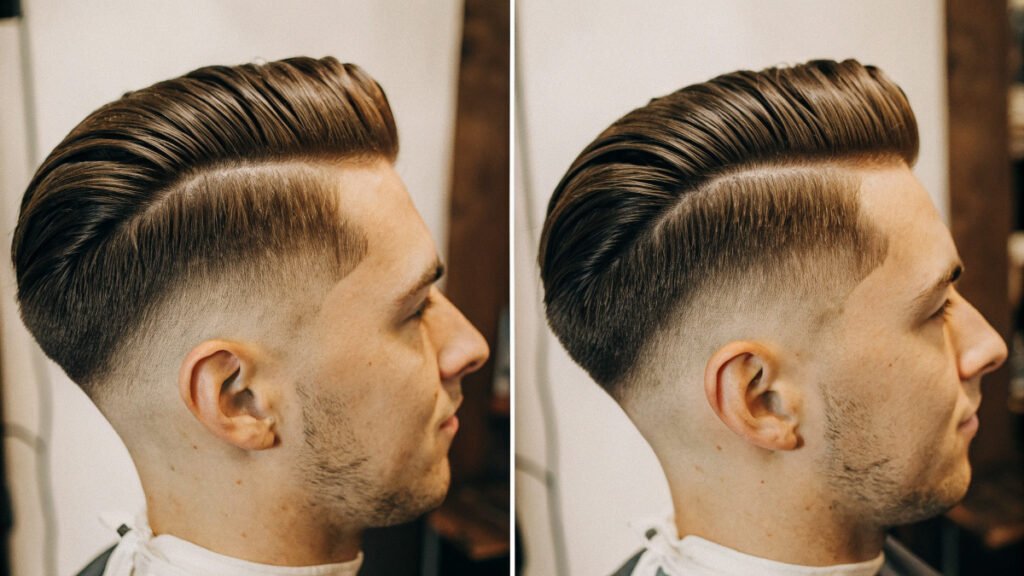
Drop fades curve behind the ears. This creates unique shapes in the cut. The fade line follows an arc instead of straight edges. Both tight and loose curls complement this style.
Barbers create curved transitions that follow head shape. The fade drops lower behind ears. This adds visual interest to standard fade patterns. The technique requires advanced skills.
Drop fades suit men who want something different. The curved lines stand out from typical cuts. This style shows personality while maintaining professionalism.
Essential Maintenance Practices
Proper care keeps your fade looking sharp. Daily routines matter as much as professional cuts. The right approach preserves both style and hair health.
Daily Hair Care Steps
Start with curl-specific shampoo and conditioner. These products understand curly hair needs. Apply them while hair is completely wet. Work products through with gentle finger movements.
Avoid regular towels when drying. Cotton creates friction that causes frizz. Microfiber towels or cotton t-shirts work better. Press hair dry instead of rubbing. This preserves natural curl patterns.
Apply styling products to damp hair. Work in small sections for even distribution. Use fingers instead of brushes. Brushes break up curl clumps and create frizz.
Product Selection Strategy
Choose lightweight, water-based formulas. Heavy products weigh down curls and cause buildup. Look for items that add moisture without grease. Read ingredient lists to avoid harsh chemicals.
Start with leave-in conditioner for moisture. Add curl cream for definition and hold. Finish with light oil for shine if needed. Layer products from lightest to heaviest consistency.
Avoid products with sulfates, alcohols, and silicones. These ingredients dry out curls and cause damage. Natural formulas work better for long-term hair health.
Professional Touch-Up Schedule
Book appointments every two to three weeks. Regular cuts maintain clean lines and proper proportions. Fast-growing hair needs more frequent visits. Slow-growing hair can wait longer between cuts.
Communicate clearly with your barber about desired changes. Bring photos of styles you like. Describe what works and what doesn’t about your current cut. Clear communication prevents disappointments.
Schedule appointments in advance. Good barbers book quickly, especially those experienced with curly hair. Consistent timing prevents your fade from growing out completely.
Common Problems and Solutions
Several mistakes can ruin a good fade. Understanding these issues helps you avoid them. Prevention is easier than correction.
Choosing Wrong Fade Heights
Selecting inappropriate fade heights creates balance problems. High fades can overwhelm small faces. Low fades might not suit thick hair types. Consider your face shape and hair density when choosing.
Oval faces work with any fade height. Round faces benefit from higher fades. Square faces look better with lower fades. Long faces need medium heights for balance.
Consult with experienced barbers about face shape compatibility. They see how different cuts affect facial proportions. Professional advice prevents costly mistakes.
Poor Curl Management Habits
Bad curl care ruins even perfect cuts. Using wrong products creates frizz and damage. Rough handling breaks curl patterns and causes uneven appearance.
Learn proper curl care techniques from reliable sources. Practice gentle styling methods that preserve natural patterns. Invest in quality products designed for your specific curl type.
Develop consistent routines that work with your schedule. Sporadic care produces inconsistent results. Daily attention keeps curls healthy and defined.
Improper Growing-Out Methods
Growing out fades requires patience and planning. Skipping maintenance cuts creates uneven growth patterns. Poor transitions between lengths look messy and unprofessional.
Plan your growing-out process with your barber. Schedule shaping cuts that guide growth in right directions. These appointments cost less than full cuts but maintain appearance.
Expect awkward stages during growing-out periods. Temporary styling challenges are normal. Focus on hair health during these transitions.
Advanced Styling Methods
Master these techniques for superior results. Advanced methods enhance natural curls while maintaining fade sharpness. Practice develops skill and confidence.
Curl Definition Techniques
Apply products to soaking wet hair for best results. Water helps distribute products evenly through curl strands. Dry hair absorbs products unevenly and creates inconsistent results.
Use the “praying hands” method for product application. Smooth hands down hair sections without disrupting curl patterns. This method preserves natural clumping and definition.
Scrunch curls gently upward to enhance spring and bounce. Avoid aggressive manipulation that breaks curl patterns. Let hair air dry when possible for healthiest results.
Creating Sharp Boundaries
Use edge control products for precise hairlines. Apply with small brushes for accuracy. Define temple areas and necklines between professional cuts.
Practice steady hand movements when applying edge products. Shaky lines look unprofessional and amateur. Take time to create clean, intentional boundaries.
Maintain tools properly for best results. Clean brushes prevent product buildup. Sharp tools create cleaner lines than dull ones.
Managing Mixed Textures
Many men have different curl patterns throughout their hair. Top sections might curl differently than sides. Each area needs specific care approaches.
Identify different texture zones on your head. Note which areas are tighter or looser. Adjust product amounts and techniques for each zone.
Style sections separately for best results. What works for one area might not work for another. Individual attention produces overall better appearance.
Professional Consultation Benefits
Working with skilled barbers produces better results. Experience with curly hair makes a significant difference. Professional knowledge prevents common mistakes.
Finding Qualified Barbers
Look for barbers who specialize in curly hair. Check their portfolios for examples of similar work. Read reviews from men with similar hair types.
Ask about specific training with curly hair techniques. Many barbers learn primarily on straight hair. Specialized education makes a measurable difference in results.
Schedule consultations before booking full services. Discuss your goals and lifestyle requirements. Good barbers ask questions and offer honest advice.
Building Long-Term Relationships
Consistent barbers learn your hair behavior and preferences. They track what works and what doesn’t over time. This knowledge improves results with each visit.
Communicate openly about satisfaction levels. Honest feedback helps barbers adjust their techniques. Mutual understanding develops through regular interaction.
Refer friends to barbers who consistently deliver good results. Word-of-mouth referrals help skilled professionals build their business. Good relationships benefit everyone involved.
Lifestyle Integration Strategies
Your fade must work with daily routines. Consider work requirements, exercise habits, and social activities. The right style adapts to your life circumstances.
Professional Environment Considerations
Conservative workplaces require subtle styling choices. Low fades with minimal contrast work better than dramatic cuts. Clean appearance matters more than fashion statements.
Client-facing roles need polished, intentional looks. Well-maintained fades project competence and attention to detail. Regular maintenance becomes a professional investment.
Creative industries often welcome bold styling choices. High fades and unique variations can enhance personal branding. Express personality while maintaining professionalism.
Active Lifestyle Adaptations
Regular exercise affects hair maintenance routines. Sweat and frequent washing require different product choices. Water-resistant formulas maintain style during activities.
Swimming and water sports present special challenges. Chlorine damages curl structure and color. Protective treatments prevent chemical damage.
Outdoor activities expose hair to sun and wind. UV protection prevents color fading and dryness. Protective styles reduce environmental damage.
Long-Term Hair Health Focus
Healthy hair looks better and styles easier. Long-term care prevents damage and promotes growth. Invest in hair health for better styling results.
Nutrition and Hair Growth
Proper nutrition supports healthy hair growth. Protein, vitamins, and minerals contribute to strong hair structure. Poor nutrition shows in hair quality and appearance.
Stay hydrated for optimal hair health. Water supports cellular function and nutrient transport. Dehydration affects hair texture and appearance.
Consider supplements if dietary intake seems insufficient. Biotin, iron, and omega-3 fatty acids support hair health. Consult healthcare providers about supplementation needs.
Damage Prevention Methods
Minimize heat styling to prevent curl damage. Air drying preserves natural texture better than blow drying. When heat is necessary, use protective products.
Protect hair during sleep with silk or satin pillowcases. These materials create less friction than cotton. Reduced friction prevents breakage and frizz.
Trim regularly to remove damaged ends. Split ends travel up hair shafts and worsen over time. Prevention costs less than damage repair.
Conclusion
Curly hair fades combine style with practicality. The right cut enhances natural texture while creating clean, professional appearance. Success depends on choosing appropriate fade heights, maintaining proper care routines, and working with skilled barbers.
Regular maintenance keeps your style looking sharp. Daily care preserves curl health and definition. Professional touch-ups maintain clean lines and proper proportions.
Invest time in learning proper techniques. Practice develops skill and confidence with your specific hair type. Quality products and tools make a significant difference in results.
Work with barbers who understand curly hair behavior. Experience with various curl patterns produces better cuts. Long-term relationships improve results over time.
Your fade should fit your lifestyle and professional requirements. Consider all factors when choosing styles and maintenance schedules. The right approach makes curly hair an asset rather than a challenge.
